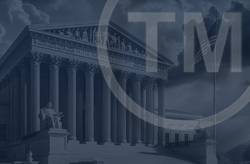 Trademarks can be a business’s most valuable assets. Apple’s mark is estimated to be worth more than $355 billion. The Amazon mark lags behind by a hair at $350 billion.
Trademarks can be a business’s most valuable assets. Apple’s mark is estimated to be worth more than $355 billion. The Amazon mark lags behind by a hair at $350 billion.
When the value of a company’s trademark can be so high, it makes good sense to carefully develop, grow and protect marks.
Trademarks can take many forms but first and foremost a mark must serve the purpose of identifying the source of goods in the minds of consumers. Letters, numbers, domain names, abbreviations, nicknames, words, slogans, color, alone or in combination with other colors, and designs can serve as marks.
The configuration of products or packaging, called “trade dress” also can serve as a mark if not functional. Generic terms (computertraining.com) can never serve as a trademark because they remain available for anyone to use. Marks that are merely descriptive of the goods (Ever Sharp) must acquire secondary meaning, being an association in the consumers’ minds between the goods and their source.
“First come, first served” is the basic rule of acquiring rights in a mark. Ownership of a distinctive mark goes to the first to use it in commerce; ownership of a descriptive mark belongs to the first mark that acquires secondary meaning through use.
Common law and federal, rights are based on this principle of first to use. Only a bona fide use of the mark will create trademark rights.
The first person to use a mark in association with the sale of goods, or services, is the owner and considered the senior user. The senior user is granted many rights, but the most important is the exclusive right to use the mark in its marketplace, causing all goodwill accruing from the sale of goods to inure to the mark’s owner.
Challenges to priority based on first use are sometimes decided on the question of whether sales establishing first use were bona fide or merely de minimis and inconsequential. Token and intercompany sales won’t count.
Yet even a small volume of initial sales can establish priority when followed by ongoing sales. Courts have held that a genuine use of the mark in commerce will establish priority even if not extensive. Small, sporadic or inconsequential sales may be considered de minimis and not serve to establish priority. Priority is a question of fact for the trier of fact.
In an outlier decision, the U.S. Court of Appeals for the 3rd Circuit decided priority not on the basis of first, legitimate, sale, but instead on a theory of market penetration – clearly placing a smaller user with a first sale at risk to a more well-heeled seller who adopts the mark after the first seller but is first to penetrate the market. In other circuits such conduct would be actionable as infringement called “reverse confusion.”
Federal registration is not required to obtain trademark rights, and an owner of a trademark can rely on its common law rights which grant exclusive rights to use the mark only in the owner’s actual market and an area that it may reasonably expand into. Federal registration grants the registrant a national priority of exclusive use.
Some litigants have claimed ownership of trademarks on the grounds that they conceived the idea for the mark before another party began to use the mark in commerce. Courts have steadfastly held that only use of the mark in commerce creates priority.
There have been challenges to priority based on a party’s mere preparation to sell goods bearing the mark, such as pre-sales promotion of a product or business. In most cases use in connection with preparation to engage in business will not grant priority. The mark must be actually used in commerce with the goods or services.
A party, however, can file an “intent to use” application with the USPTO before the mark has been used in commerce if they have a bona fide intention to use the mark. If the mark is used within three years of the USPTO’s Notice of Allowance, and the registration is granted following filing of a Statement of Use, priority is retroactive to the date of the application.
Marks should be thoughtfully developed and employed to assure priority and exclusive use in the largest territory available. Not every owner of a mark intends to do business in a territory larger than a city or a state, and for those owners’ common law rights are likely sufficient. For those whose dreams are more expansive, federal registration has little downside other than cost and confers many benefits.
But regardless of which path is chosen, trademark rights will not exist until the mark is used in a bona fide manner in connection with the sale of goods or services in commerce.
James B. Astrachan is a partner at Goodell, DeVries, Leech & Dann, LLP and taught trademark and unfair competition law at Maryland’s law schools for 23 years.
This article was originally published in The Daily Record.
